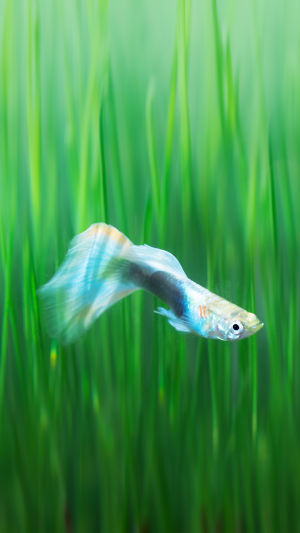Poecilia reticulata, commonly known as the guppy, is a captivating freshwater fish species cherished by aquarists and scientists alike. Renowned for its vibrant colors, intricate patterns, and intriguing behavior, this small fish has captivated the interest of enthusiasts and researchers for many years.
In this article, we will explore the fascinating world of Poecilia reticulata, shedding light on its unique characteristics and significance.
Physical Attributes:
The guppy boasts an array of visually stunning features. Its body shape is typically slender and elongated, with a pointed snout and a rounded caudal fin. However, what sets the Guppy apart are its vibrant colors and intricate patterns.
Males are renowned for their breathtaking hues, ranging from iridescent blues and oranges to striking yellows and greens, often adorned with intricate spots, stripes, or reticulated patterns.
In contrast, females tend to have more subdued colors, usually featuring a mottled appearance that provides effective camouflage in their natural habitats.
Reproduction and Behavior :
One of the most intriguing aspects of Poecilia reticulata is its unique reproductive behavior. Guppies are livebearers, meaning they give birth to live, fully formed fry instead of laying eggs.
Females can store sperm for several months, allowing them to fertilize multiple broods from a single mating. This adaptability has contributed to their remarkable success in diverse environments.
Guppy behavior also offers an abundance of fascinating observations. The males exhibit elaborate courtship displays, showcasing their vibrant colors and performing captivating dances to attract females.
This sexual selection has led to the evolution of a wide variety of color patterns among different guppy populations. Guppies are also highly social, often found in schools that provide protection against predators.
Their agile movements and curiosity make them captivating to observe, as they explore their surroundings and interact with other tank inhabitants.
Habitat and Distribution :
Originally native to northeastern South America, Poecilia reticulata is now found in various regions worldwide due to intentional introductions and accidental escapes.
Guppies thrive in tropical freshwater habitats, such as streams, rivers, and ponds. They exhibit remarkable adaptability, thriving in diverse conditions ranging from warm, slow-moving waters to cooler, fast-flowing streams.
This resilience has contributed to their success as an invasive species in certain ecosystems, but it has also made them valuable subjects for scientific research.
Ecological Importance (100 words):
Guppies play a significant ecological role in their natural habitats. As omnivorous feeders, they help control populations of invertebrates, such as mosquitoes, thus reducing the risk of vector-borne diseases.
Additionally, their presence influences algal growth, as they consume algae and other organic matter. This dynamic relationship between guppies and their environment highlights their importance in maintaining ecosystem balance.
Poecilia reticulata, the guppy, continues to captivate both hobbyists and researchers with its stunning appearance, unique reproductive behavior, and intriguing ecological role.
The combination of vibrant colors, intricate patterns, and captivating behavior makes this small freshwater fish an engaging subject of study. Understanding the complexities of Poecilia reticulata allows us to appreciate the wonders of nature and the delicate interplay of species within ecosystems.





